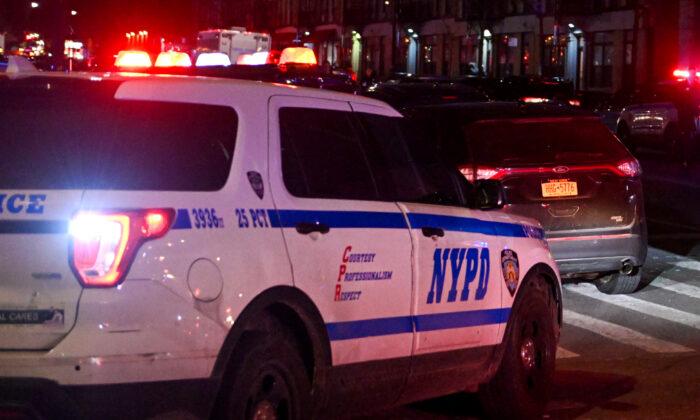The United States is facing a vexing crime problem.
Even if the causes of the surge in the past few years are correctly identified, it could take many years of sustained efforts to reverse it. However, some solutions could be deployed right away, according to several experts—as long as there’s a will to do so.
“Police departments have to get back to the basic blocking and tackling, keeping their communities safe,“ said Zack Smith, a former federal prosecutor and now a legal fellow with The Heritage Foundation, a conservative think tank. ”Prosecutors have to get back to the basic blocking and tackling of prosecuting crimes. And so when that happens, I think the system will begin to function much, much better.”
Experts have identified several factors behind the surge, including new laws that make it harder to arrest and imprison a criminal; lenient, ideologically driven prosecutors; and disruptions to the court and prison systems in response to the COVID-19 pandemic.
These phenomena have been allowed to take root partly because of complacency over receding crime in recent decades, according to Thomas Hogan, an adjunct fellow at the conservative Manhattan Institute and a former federal prosecutor.
“During that great crime decline, prosecutors, police, mayors pulled every lever to reduce crime,” he said. “As a result, people really began to believe, ‘Well, crime’s going to keep going down no matter what. We’ve won the war on crime. We don’t have to do all these things anymore. We don’t have to lock anybody up anymore.’ Now, they’re finding out that that’s not true.”
Yet some cities, such as Oklahoma City or Detroit, were able to counter the crime wave better than others.
“The triumvirate in any city that will control crime are the police chief, the chief prosecutor, and the mayor,” Hogan said. “In any place where those three are aligned on controlling crime, you’ll probably see fairly low crime. And that’s separate and apart from what their politics are.”
Some cities in which officials and even a large part of the electorate may have been sympathetic to the “defund the police” or “de-incarceration” agenda are now reconsidering.
“Even in very left-leaning cities with very left-leaning mayors, you’re seeing this phenomenon where people are recognizing that you need to have law and order in order for the rest of society to be able to flourish,” Smith said.
However, reversing the soft-on-crime policies isn’t an easy process. District attorneys, mayors, judges, and lawmakers advocating such policies are often backed by powerful financial players, such as progressive billionaire George Soros.
And even if new officials are elected and the policies are officially reversed, the system will still have to deal with emboldened criminals.
Alternative Programs
On the other hand, returning to a tough-on-crime strategy doesn’t mean that locking people up will be the only solution. Many reasonable reforms have been implemented over the years to steer offenders back to the right path or prevent at-risk people from falling into criminal behavior.“Traditional law-and-order district attorneys have really been at the forefront and setting up alternative programs to help people who may need treatment. Drug courts, veterans courts, domestic violence courts, all of those are reforms that predated this rogue prosecutor movement,” Smith said.
“But the key to those programs is that there’s still accountability. If someone goes to a drug court and they either refuse to complete the program or they won’t complete the program, at that point, the district attorney can step back in and reinstitute the charges against them, and they can be convicted and sent to prison.”
Hogan agrees.
“The restorative justice model only works if you also have a serious traditional model on top of it,” he said.
In Hogan’s experience, it does happen that criminals get straightened out and there’s value to giving a criminal a chance to fix his behavior through some program alternative to incarceration.
“That will only work if on the other end of it they know, ‘If I don’t steer away from this, then I will end up going to jail for a really long time,’” he said. “Because if the other end of restorative justice is, ‘No matter what I do, I’m not going to jail for very long,’ then it’s not going to work.”
Ultimately, the jury is still out on whether restorative justice programs are effective, according to Hogan.
Prevention
Over the past decade, many violence prevention programs have also been put in place.Police have increasingly adopted “precision policing” strategies, focusing their attention on the individuals most prone to violence.
“It’s a relatively small cohort of offenders that cause most of the violent crime in every city. And that’s around the world. It’s 5 percent of the offenders who cause over 50 percent of the violent crime,” Hogan said.
Violence interrupters, often former gang members and ex-cons themselves, have been employed in some cities to mediate conflicts between rival gangs, crews, and factions to prevent the endless cycle of vendetta. Their efforts seem to have yielded some reduction in shootings.
Also, various youth mentorship programs, in which at-risk youth would be assigned to an adult with some success to their name who could provide credible guidance on how to make it in life without resorting to crime, have become popular.
Smith said, “What’s lacking right now is accountability for anyone.”






Friends Read Free